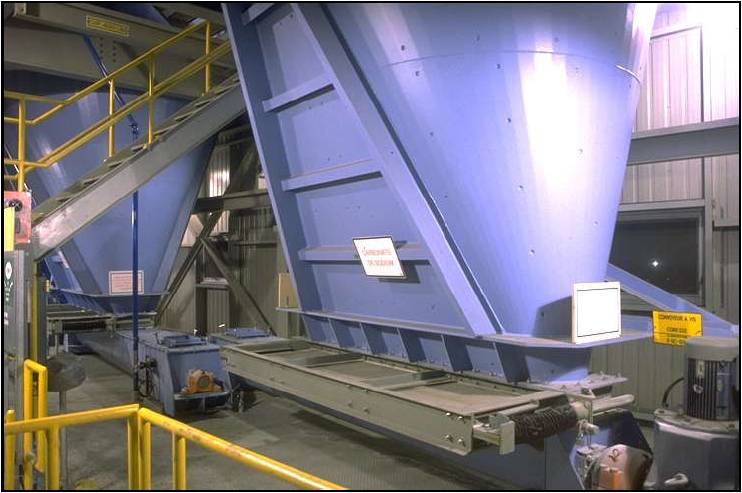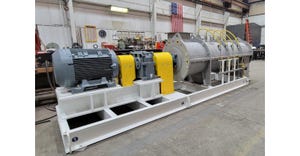July 21, 2014

In the past, we have discussed flow properties testing and the need for this type work to ensure reliable bin and hopper flow. The Jenike Shear Tester is a device that is recognized as the standard for testing bulk solids by ASTM (D-6128-97) in the U.S. and in Europe, and the test procedure is well adapted for a testing laboratory.
Jenike’s method has been scrutinized and perfected over the years and remains the preferred approach. It is classified as a direct shear tester that is capable of providing information on a solid’s cohesive strength as well as its wall friction properties. These are the two main considerations when designing a bin or hopper to ensure reliable material flow.
One key to reliable flow testing is to expose the solid being tested to conditions representative of actual environmental conditions it will be exposed in the field. Consider that not all bulk solids are handled at room temperature in a controlled environment. In order to run flow tests in the laboratory, an appropriate amount of the product to be tested is required to be shipped in a sealed container to the testing laboratory.
The testing laboratory should then ensure that the product is tested under representative conditions of moisture content, temperature, time at rest, etc. But, what happens if your material changes properties after a certain period of time. Perhaps the sample that was taken has been placed in a sealed container and shipped, typically requiring two to four days of travel depending on the shipping method. (see Jenike Shear Tester photo)
What if the product’s moisture content -- which at one time was surface moisture -- now migrates into the particles and becomes inherent moisture. This may affect the material’s flow properties, especially its cohesive strength. When the sample is received, it is thoroughly mixed and then transferred to a jar for testing. Any cohesive strength due to moisture migration has been destroyed, and the results may be inaccurate, because in actual handling in a silo this would not be the case.
What can be done to overcome this particular problem?
One solution would be to run the flow properties tests on-site. This would allow access to fresh material and accurate simulation of environmental conditions. This is a common approach that we have used several times. We ship or drive the test equipment to the facility and set up somewhere near the process to be evaluated. We require about a 6-ft-long table and electricity to accomplish the tests. A fresh sample is taken from the process for testing.
This process is somewhat cumbersome in that the Jenike Shear Tester, shown, weighs about 75 lb. The rest of the equipment required for testing is shipped and total an additional 30-50 lb. To simulate loads applied to the material, we require weights (several hundred pounds). These weights are applied to the shear cells in order to simulate the loads the material is exposed to in storage. Shipping becomes expensive and time consuming in that the equipment cannot be used while it is being shipped. (see Shear Cell and Weights photo)
It is critical to always keep in mind that the most important consideration is an accurate representation of the material flow properties. If it takes this type of approach to ensure accuracy, then it is absolutely necessary. Some on-site testing requires testing hazardous products. This work is typically performed in a hood with adequate ventilation. However, it is awkward and cumbersome to run tests this way.
Having performed on-site tests many times over the years, I am still amazed at the attention the test setup receives. People wander by wondering what you are doing and luckily I enjoy talking about the shear test process.
Joseph Marinelli is a consulting engineer and president of Solids Handling Technologies. He has been providing testing and consulting services since 1972. As a former consultant with Jenike & Johanson Inc., he has years of experience testing powders and designing bins and feeders for reliable flow. He lectures frequently on the topic of powder handling and has published several papers including and article in a chemical encyclopedia and two in a food powder book. Marinelli can be reached at 803-802-5527 or [email protected].
Click here for more Powder Perespectives
You May Also Like


